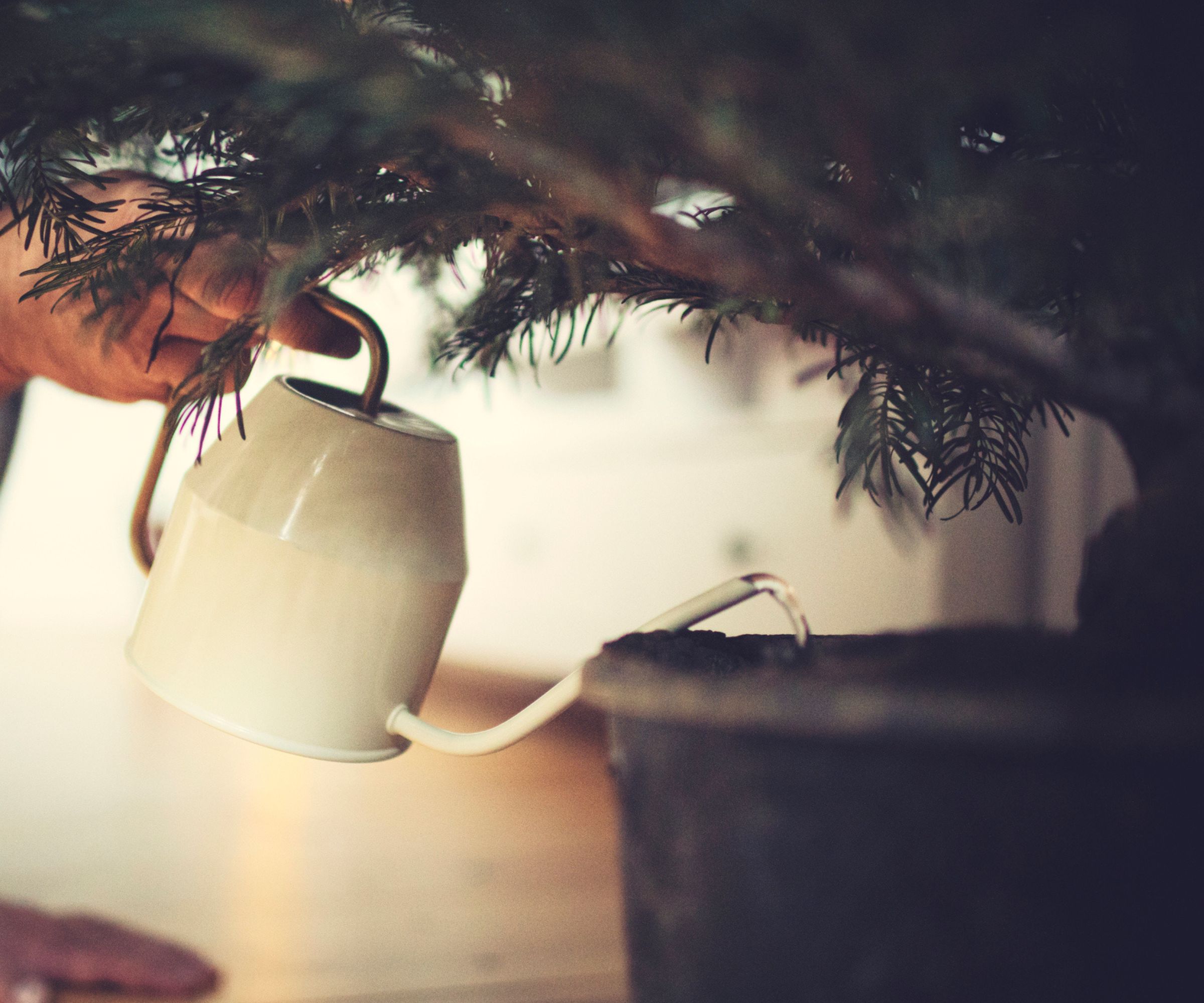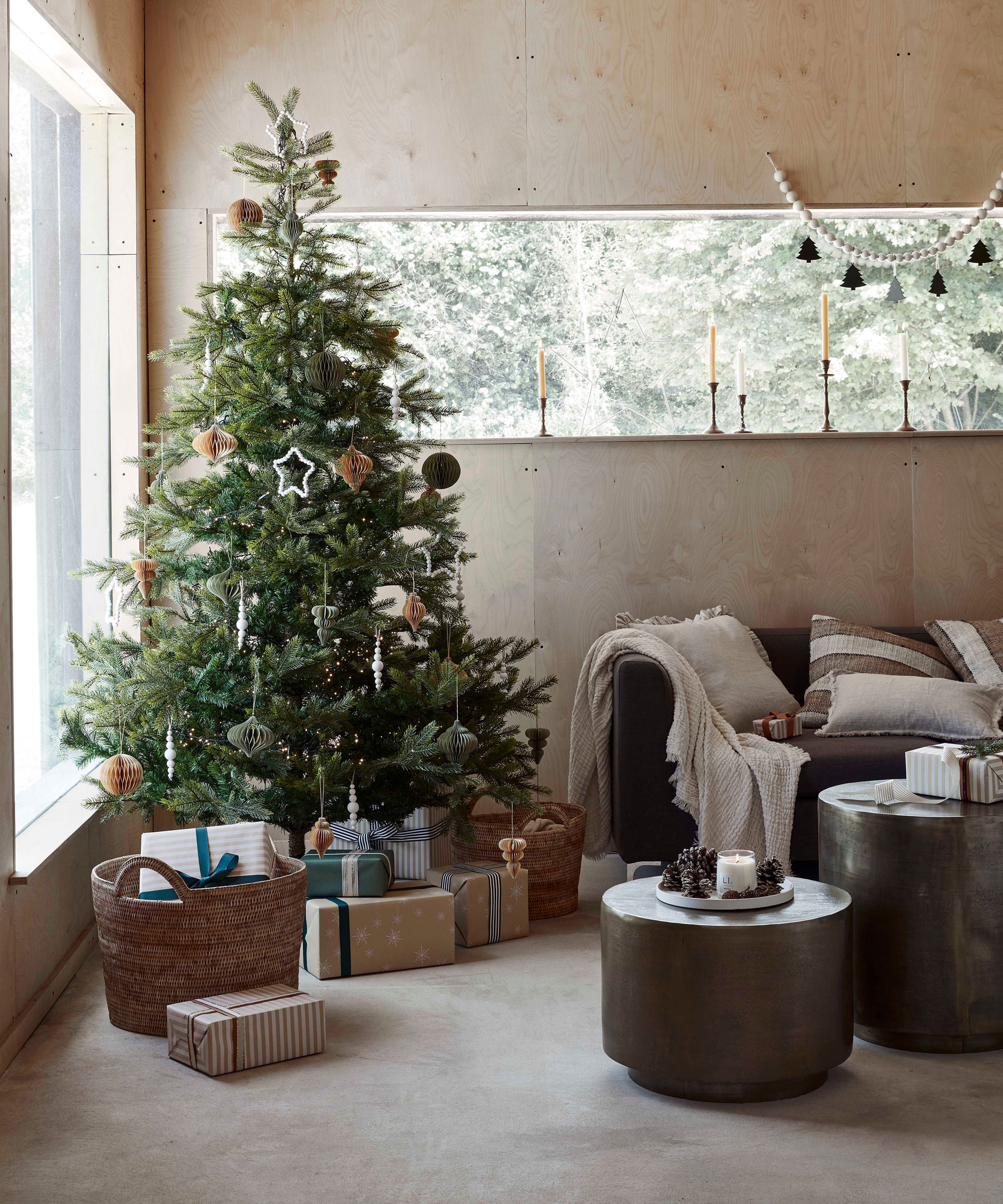4 reasons why your Christmas tree is dying, and expert tips to revive it
Because no one wants a lackluster tree for Christmas


If your Christmas tree is starting to look a little worse for wear well before the big day, it might be that the conditions aren't quite right for it to thrive in your home.
We have spoken to a range of plant and gardening experts, all of whom agree that there is a range of reasons your tree may be suffering indoors: from too little water to too high a room temperature. The key to working out what is wrong with your Christmas tree care routine? Pay attention to your tree's surroundings.
Below, we list four of the main reasons a Christmas tree may be dying inside your home and have experts explain what you can do to revive it.
Why is my Christmas tree dying?
The key signs your Christmas tree is dying? It might be that it's dropping needles, drooping or turning brown. This is why – and what to do.
1. The room is too warm or the tree is too close to a heat source

While we all want to stay toasty and warm at Christmas, our living Christmas trees often do not feel the same. Their natural habitat is a cold winter woodland, after all. This often means that the best conditions are likely to be exactly what makes a Christmas tree die.
Louise Findlay-Wilson who writes the popular Blooming Lucky gardening blog explains that 'it's an obvious tip to try to keep your tree away from radiators – but you'd be surprised how many people get this wrong. I'd go so far as to keep the tree in a cool spot near a window, and if you can manage it without freezing your household, give it a regular dose of fresh air.'
2. Your Christmas tree needs a drink, a lot, regularly

Understanding how to keep a Christmas tree alive is not rocket science, but they do sometimes require a little more attention than many first realize. More often than not a Christmas tree dies purely because it has not had enough water. Yes, it's true – even trees without roots require water when moved indoors (just like cut flowers) so knowing how to water a Christmas tree, and how much, is essential. And, ignore advice to put sugar water on a Christmas tree to revive it.
Design expertise in your inbox – from inspiring decorating ideas and beautiful celebrity homes to practical gardening advice and shopping round-ups.
'It's important to give your Christmas tree water. Some people suggest using concoctions involving lemonade, but I don't think that really helps. Water is fine, but you will need plenty of it,' explains Louise Findlay-Wilson. 'This isn't a one-off job to simply be done when you first set up your tree. Check every day. After all, trees are big and can drink a lot. So, at the very least expect to give your tree half a liter of water a day and if your tree is large, it could be a lot more!
'To be on the safe side and ensure it doesn't dry out I'd keep the tree standing in a few inches of water all the time, and if the level drops add more,' she adds.
One way of ensuring your tree will last is to prep the stump before putting it in place and decorating it for Christmas, Louise says. 'A bit like cutting the bottom off stems of flowers before putting them in a vase, cut off a couple of inches from the bottom of the tree, before putting it on its stand. This will make it much easier for the tree to absorb that all-important water. For the same reason obviously don't stand your tree in sand or soil.'
If you don't mind the extra effort and want to increase your tree's limited lifespan, it may be worth moving your tree and its ornaments and retrimming the base before the big day. Or, if you're yet to put yours up, a Christmas tree water reservoir like this one from Amazon is absolutely your best option for a base.
If your potted tree (with roots) is dying, it's most likely due to underwatering – but overwatering will also kill off a Christmas tree. The soil in the pot shouldn't be boggy, but moist, so do the finger dip test to check whether your tree's roots are sitting in water and if they are, try to drain it a little or hold off on watering until the top two inches of the soil feels dry again.
3. The humidity in your home is inconsistent

Humidity inside a home in winter can be inconsistent as we put our heating on and cold air comes through opening doors. As with any houseplant, this fluctuation can cause dropping needles, or even kill off an otherwise healthy Christmas tree.
Deemer Cass, horticulturalist and tree expert at Fantastic Gardeners* suggests limiting the time your tree spends indoors to keep it alive for longer.
'Do not keep a potted Christmas tree indoors for more than 12 days at a time as it cannot survive in the warm temperatures indoors,' he says. 'Move your tree outside every 10 to 12 days for around 24-30 hours to allow the tree to recharge. Once the holidays are over it’s best to move rooted trees outdoors indefinitely so that they can continue to thrive.'
It may also be a good idea to invest in a humidifier to add some moisture back into a particular dry home (or, conversely, one of the best dehumidifiers if your home has too much moisture). This can help set the indoor temperature to between 45-50℉ which is ideal for both cut and rooted Christmas trees.
4. The tree has been brought it inside too early

If you have a cut Christmas tree, it could be that your tree is simply starting to fade due to lack of roots. Unlike rooted trees, a cut Christmas tree is always living on borrowed time as it tries to absorb water through the trunk instead of a complex root system. The result is a tree that will not last very long.
If you have ruled out all the other reasons for your tree dying or dropping needles, then this is likely the culprit – especially if you brought it inside weeks before Christmas Eve. Ideally, you should wait to bring a real cut tree into the house until a week or so before Christmas day, putting up all of your other Christmas decor first.
Unfortunately, there is little that can be done to save a cut Christmas tree from dying but you may be able to keep it going a little longer by keeping it fresh with plenty of cool, plain water to drink.
What to do if your Christmas tree is not drinking water?
If your Christmas tree is not taking in any water over a few days, then the cut base may have been sealed over with sap. While the main way to get rid of this is to trim the base of the tree, you may be able to loosen the sap using hot, but not boiling, water. The hot water will melt the sap and allow for water absorption to begin again.
*In partnership with BestHeating

Chiana has been at Homes & Gardens for two years and is our resident 'queen' of non-toxic living. She spends most of her time producing content for the Solved section of the website, helping readers get the most out of their homes through clever decluttering, cleaning, and tidying tips. She was named one of Fixr's top home improvement journalists in 2024.